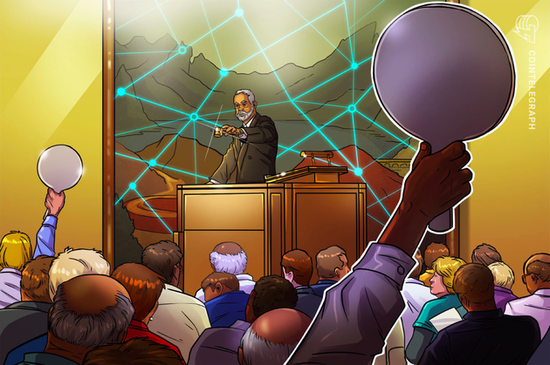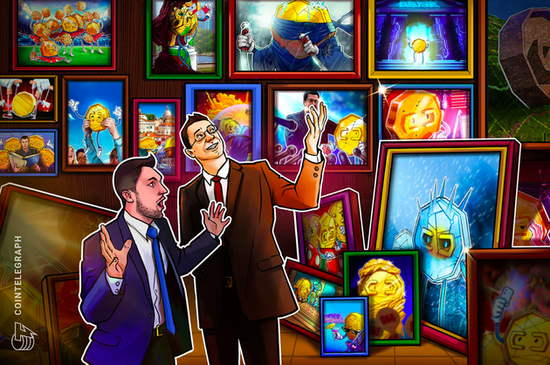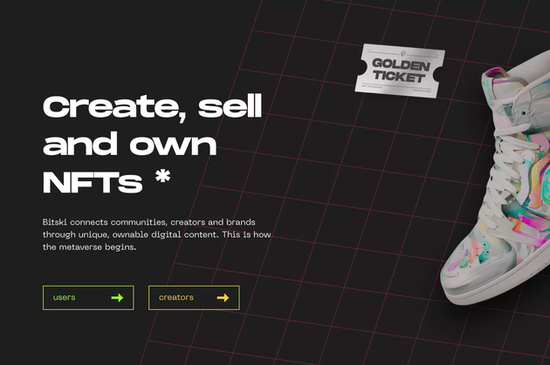It is not news that artworks can sell at a high price. However, a digital image that anyone can easily view and download online can sell for tens, hundreds or even tens of millions of dollars, which still refreshes many people's understanding: a GIF image called "Nyan Cat" sold for 590000 dollars; The Internet talent made a Baokemeng card with his cartoon image and sold it for 5 million dollars; The electronic music album sold for more than 11.6 million dollars in less than 24 hours. Collage electronic paintings sold at Christie's for 69 million dollars... all thanks to a new technology called NFT.
No matter Bitcoin or other cryptocurrencies, or NFT, which is now in the limelight, can escape the word "hype". As long as there is a casino, there is no shortage of gamblers. NFT mania seems unreasonable. But Bitcoin has already proved that no matter whether it is reasonable or not, it will not affect its record high. It has taken this mania to the extreme, making people who look down on it suffer repeated beatings.
We may be witnessing an NFT bubble now, but like Bitcoin in 2017, the bubble may burst, but it is better not to think that it will collapse.
What is the story behind NFT? Listen to us carefully.
 Source: Cointelgraph
Source: Cointelgraph Arc is a visual artist from Saudi Arabia. Like many people, he didn't think cryptocurrency had anything to do with art at first. Moreover, he himself knew little about this technology, and all kinds of negative comments on cryptocurrency made him keep away from this "new thing". But all of this changed because of one thing.
Last year, a sales representative of KnownOrigin, a digital art platform, found Ake on Twitter. After some communication, he agreed to make an attempt on this platform based on the Ethereum blockchain. The sales representative opened an artist account for him, configured a cryptocurrency wallet, and paid for the "fuel cost" needed to upload artwork to the blockchain and "coin".
"When I released my work on KnownOrigin, I didn't know what I was doing, but I just tried. ”Aker said, "But a few days later, I received a notice that one of my works had been sold. I was shocked because I didn't expect anyone would buy my digital art."
As of March 2021, Aker has sold more than 270 works in the form of non homogenous tokens (NFT), with a total value of more than 480000 dollars. He added that this figure was based on the current price of the cryptocurrency Ethereum - since he started selling his works, the price of Ethereum has risen significantly.
Aker is not the only artist who has made a lot of money with the help of NFT. Chris Torres, the author of "Nyan Cat", also sold the token version of this GIF work at the end of February for 590000 dollars. The collage image of Everydays The First 5000 Days created by digital artist Mike Winkelmann, nicknamed Beeple, took two weeks to sell at Christie's for $69 million, becoming the first pure digital work sold by a large auction house. Not only that, Winckelman can draw 10% of the royalties from this work every time it changes hands.
In fact, this trend of digital collections is not unique to the art world. Independent artists and musicians also regard NFT as a viable digital ownership model. At the same time, sports, music, games and other industries driven by the "fan economy" are all aware of the income generating potential of this technology.
NBA launched Top Shot in 2019, which is a market for users to collect and trade NBA wonderful videos through blockchain technology. Since its establishment, it has achieved a cumulative sales of 230 million dollars, and the personal videos of LeBron James and Zion Williamson have sold a unit price of about 200000 dollars. Last month, Logan Paul, an American online video expert, sold some Baokemeng cards with his own cartoon image in NFT, with a total amount of more than 5 million dollars. Electronic music producer 3LAU also released a limited edition NFT album on February 27, selling more than 11.6 million dollars in less than 24 hours.
Brief analysis of principle
See here, you may still be confused. What exactly is NFT?
The amount listed above is really eye popping, but for ordinary people, the various terms mentioned therein are puzzling. You may think that only blockchain technical experts can understand, purchase and produce NFT. But that's not the case. However, what is really unexpected is that NFT is not only expensive, but also far less environmentally friendly than conventional digital products.
The theoretical basis of these tokens is an economic concept called "fungibility". According to the definition of the Oxford Dictionary, the so-called "fungibility" refers to the ability to "replace other articles of the same type, or be replaced by other articles of the same type" or "replace each other". Money, oil and gold are all replaceable assets, that is, homogeneous assets.
If these definitions make you more confused, let's take a more popular example: there are 1.8 billion US $50 notes in circulation, all of which are worth US $50 and can be exchanged, so they are called homogeneous assets. Because houses, cars and paintings have their own characteristics, they cannot be simply interchanged. They need to be valued according to specific conditions, so they are all non homogenous assets.
All non homogenous digital assets are unique and have no swap value. Devin Finzer, CEO of Open Sea, NFT market, said that although the definition of NFT sounds abstract, it actually existed in the early days of the Internet. "Website domain names, event tickets, game props, and even accounts of social networks such as Facebook or Twitter are all non homogenous digital assets. ”"They are only different in tradability, liquidity and interoperability," he explained
So, how can we turn an asset into NFT? Digital markets such as Open Sea and KnownOrigin simplify the whole process, and can be used even if users do not understand blockchain technology. (It is worth mentioning that there is no unified definition of blockchain so far, so it is easy to cause confusion. The blockchain in this article refers to "a series of accessible but unchangeable records shared in a network, so no member can modify or delete the data without destroying other records in the sequence.")
Artists or creators can upload and authenticate any digital assets to the Ethereum blockchain, including 3D animations, videos, tweets, and music. This process is called "coinage". Through this process, NFT can be coded and a verifiable file containing price, ownership and transfer records can be established to avoid being forged or copied digitally by others.
Once the upload is completed, as long as the blockchain continues to run, NFT will permanently exist on the blockchain. Since each NFT has a unique digital attribute, no two NFTs are identical. Even if the same artist publishes two works that do not appear to be significantly different, once they are made into NFT, their metadata will still be different. Just like a pair of twins who look the same but are not the same person, DNA can prove their differences. However, NFT is still unable to fully protect intellectual property rights. If an artist wants to sue for counterfeits, he still needs to apply for copyright for his works.
What digital artists like Ake value most is the uniqueness, durability and source proof that this technology gives their works. Artists and musicians used to rely on intermediate links such as auction houses, galleries and streaming media platforms to sell or display their works. Sometimes they are unable to extract royalties from future sales. But with NFT, artists can get preset royalties (usually 10%) from sales in the secondary market.
Full of misgivings
 Source: Cointelgraph
Source: Cointelgraph "NFT space feels like it is customized for artists. Before I started selling NFT, I knew little about the art industry and royalties. I can't predict the future, but I think NFT will become the sales standard of artworks. ”Said Victor, an 18 year old visual artist whose pseudonym is FEWOCiOUS.
For artists and enthusiastic collectors, buying and trading unique NFT can support the creative industry. Victor added that because this technology is part of a small subculture, which has just begun to enter the mainstream, the circle is still relatively small. However, this is not the first time NFT has attracted wide attention: as early as 2017, the blockchain cat game CryptoKitties caused media reports because it earned more than 1 million dollars through the sale of virtual cats.
Donnie Dinch is the CEO of Bitski, an online shop building platform similar to Shopify, which can facilitate creators to sell various NFTs. "Before NFT was born, digital ownership was simply impractical. ”He said, "I don't own anything at all. There will always be people selling their Fortress Night game account on Poshmark. ”Ding Qi launched Bitski in 2018, hoping to build it into a "Venmo in the cryptocurrency field". But when he met the creator who intended to sell his token last year, he began to provide shop building services for NFT.
Most NFT markets are operated based on the Ethereum blockchain, and potential buyers need to have a ready-made cryptocurrency digital wallet to purchase. Bitski is one of the few platforms that allow users to use credit cards for transactions. Ding Qi believes that this practice will become more and more common as NFT enters the mainstream. "Cryptocurrency should not be an obstacle for people to participate in NFT. ”He said, "The reason why we have not really obtained digital ownership is probably that there is no technology platform to solve this problem."

The bystanders are suspicious of the huge amount of money pouring into NFT, while the critics believe that this is the side effect of the speculation property of cryptocurrency. For example, Bitcoin is famous for its huge fluctuations. After 2013, sharp rises and falls have become a common occurrence. Ethereum, the most commonly used cryptocurrency when buying NFT, just broke a record high in early February, and then fell sharply at the end of the month. Because of such great volatility, many people believe that NFT is just speculation. However, its strong supporters still believe that NFT is expected to change the future of digital ownership, and will also bring people new channels to support creative industries.
However, some digital assets can be freely accessed by others at any time, which has become one of the most puzzling problems for many people. Billionaire Mark Cuban compares his collection of NBA highlights to the previous stamp album and baseball card. "Some people may think that I can watch the same video on the Internet at any time and anywhere." He wrote, "Yes, I can also search the traditional physical card pictures online at any time and print them out. But this does not change the value of the original real card." Cuban said that digital goods are as valuable as physical goods, And follow the same principle of supply and demand in economics.
With the widespread popularity of digital media, images, videos, sounds and texts can be easily copied and shared. In this sense, NFT seems to be out of tune with the times. The purpose of this technology is to prepare and implement a set of scarce indicators, which runs counter to the open concept of the Internet. Theoretically, this scarcity may be a good thing, because it can benefit the creators and buyers of works of art. But to build and maintain such a mechanism, it requires huge energy consumption.
Different from conventional digital technology, the energy consumption of transactions on the Ethereum blockchain is staggering: according to the data of the American Institute of Electrical and Electronics Engineers (IEEE), the power consumption of an Ethereum blockchain transaction even exceeds the average daily power consumption of American households. Ethereum developers plan to use this blockchain in another operation mode called "proof of equity" to reduce energy consumption. However, in the view of some artists and cryptocurrency critics, the low energy efficiency - as well as the novel elements that drive up NFT prices - is still deeply worrying.
Many people who support cryptocurrency, including venture capitalists, celebrities and famous creators, believe that NFT can achieve "art democratization" and win more support for creative industries. In theory, this technology can promote the growth of the "creator economy" - the term describes that more and more free artists and creative people can earn income by distributing and realizing content on social platforms.
But musicians Ali Arielle Gordon once wrote on Stereogum that although blockchain is decentralized and should be more democratic, in the current situation, NFT seems to "copy the most unbreakable paradigm in the art circle very efficiently". There is a "strict" hierarchy among creators, and famous artists and musicians can benefit from the existing social structure - musicians and artists Tesla Grimes, CEO Mask's girlfriend, recently sold more than 6 million dollars worth of digital art on the Nifty Gateway.
So Gordon concluded: "Theoretically, this system is actually encouraging investors to look for talents that have not yet been discovered, to buy artists as stocks at the lowest possible price, and then cash out and leave after they become popular." This is no different from the traditional art circle, Its development also depends on whether artists or works of art can add value. NFT market is nothing more than copying the traditional art auction process: investors look for the most popular works, some of which will eventually be auctioned again in the secondary market. Of course, it has been a long time since we paid high prices for rare collections: the antique market and limited edition goods have always been supported by the rich. At least for the moment, the popularity of NFT is mainly supported by buyers in the technology industry, and many of them are willing to spend thousands of dollars to buy works of art based on Ethereum.

Ding Qi, CEO of Bitski, admitted that the novelty of NFT itself is indeed the cause of some extreme pricing. However, he also believes that the role of NFT is not limited to the second-hand market. In his opinion, today's NFT is just like the website in 1996: "It's exciting to have a unique painting. It doesn't have to be like the movie" Top Player ", but people certainly want to express themselves in the digital space by some means to show aesthetic appeal - it's all due to human nature."
Future Outlook
Despite thousands of words, there must be many people still confused. After all, when we adapt to the basic law of unlimited copying in the digital age, and suddenly hear that anyone can copy a video, a picture, and an expression pack at will, you can buy six, seven, or even eight digits, and it is still dollars, you must feel that you have met a group of lunatics. Yes, they may be crazy, but crazy people are also part of the world.
It is unreasonable to say that Bitcoin, as the original application form of blockchain, is more than that? But no matter how disdainful you and I are, it still has a record price of 60000 dollars and created a market of trillion dollars. Today's NFT is just another form, and continues to play the same crazy. After all, even if this is a madness, it does not mean that it will "die of madness". Who says that a madman cannot "live a hundred years"?
You know, many people who buy NFT really believe in blockchain, and they believe that proof of ownership is the most important application scenario of this technology.
As mentioned above, NFT has created scarcity, and it is an important economic principle that scarcity is the most valuable thing. Admittedly, these rarities are created artificially, but this phenomenon is not uncommon: when Nike When Kanye West decided to produce only 200 pairs of Yeezy Red October, it was destined to become the treasure of the shoe party. It was no surprise that it was eventually fired to more than 10000 dollars.
In fact, the simplest analogy to understand NFT is the various collections in the traditional world. Since some people are willing to spend hundreds of thousands of dollars to buy a stamp, others are also willing to spend tens of millions of dollars to "own" a digital artwork - even if other people can search the same content for free by moving their fingers.
You may think that Everydays The First 5000 Days sold for $69 million in NFT is unbelievable, but don't forget that at another auction, Barnett Newman's "blue cloth" also sold for $40 million. By comparison, I'm afraid it's hard to decide who is crazier.
No matter Bitcoin or other cryptocurrencies, or NFT, which is now in the limelight, can escape the word "hype". Otherwise, what do you think those who buy Bitcoin at a high price of 50000 dollars want? I don't want to increase it to 100000, 200000 or even 1 million dollars in the future, and then ship at a high price when "appropriate".
Others certainly can't understand the man who bought Homer Simpson and Pepe the Frog in 2018 with 38000 dollars. But the reason why they do so is simply that they think they can sell it at a higher price in the future.
Not to mention, someone really pays! Recently, this painting sold for a sky high price of 320000 dollars in the form of NFT! As long as there is a casino, there is no shortage of gamblers.
Yes, the NFT craze seems unreasonable. But Bitcoin has already proved that no matter whether it is reasonable or not, it will not affect its record high. It has taken this mania to the extreme, making people who look down on it suffer repeated beatings.
We may be witnessing an NFT bubble now, but like Bitcoin in 2017, the bubble may burst, but it is better not to think that it will collapse. (Shuyu)



































